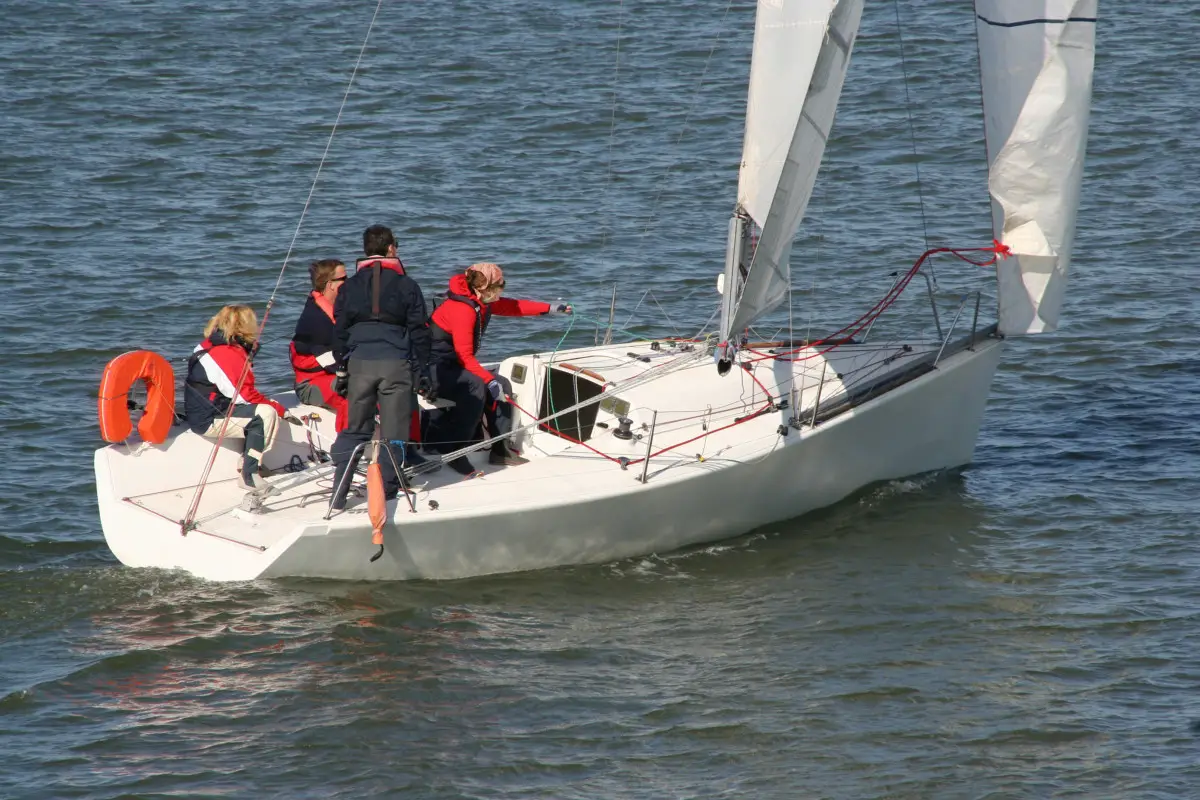As an Amazon Associate, we earn from qualifying purchases. We may also earn commissions if you purchase products from other retailers after clicking on a link from our site.
For me, sailing is a sport or recreational activity that anyone can learn how to do regardless of age, experience, and familiarity. But, for beginners (as it was for me), it can be overwhelming, and one may not know where to start. Sailing lessons are a great option for beginners, but when do you really need to take sailing lessons?
Sailing lessons are one of the best ways to learn how to sail! You could multiply the speed of learning since you have an experienced instructor. You also have options for what types of classes you can take. There are ways to learn independently as well, let’s discuss below.
This article will explain whether or not you need sailing lessons, choose a sailing school, and how long it takes to learn sailing. Furthermore, you will learn why anyone can learn to sail, how you can get sailing experience for free, and what type of sailing lessons you can take. Finally, there are some resources you can use to learn more about sailing and how to become a better sailor.
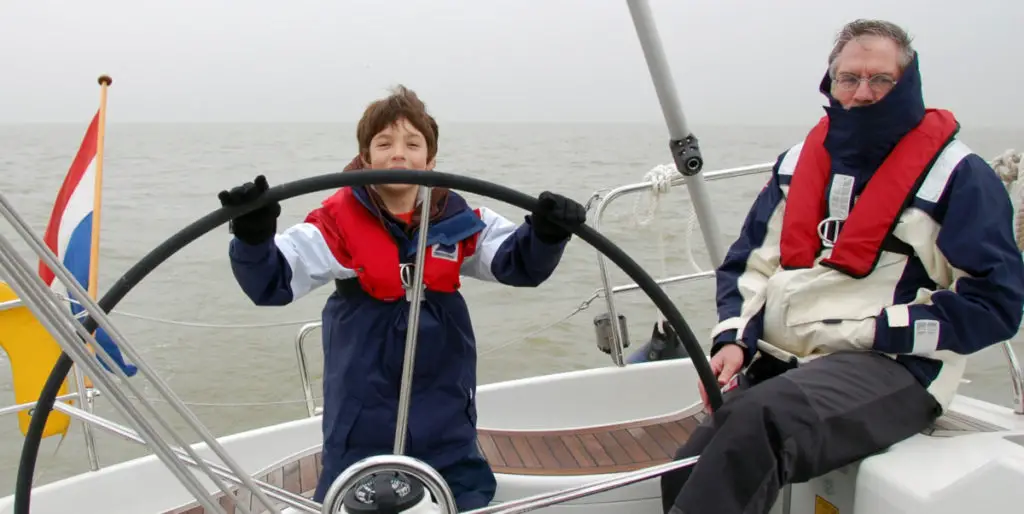
Do I Need Sailing Lessons?
If you’re a beginner, you’ll need sailing lessons, but they don’t need to be in the form of courses. There are many ways to learn how to sail, and sailing lessons can be the most efficient way. But, there are other ways to get familiar with the basics of sailing.
A lot of online resources will help you learn as much as you can about sailing before you get on the water. We will list these resources in a later section.
I took some courses with the NauticEd app, I think they are totally ok, cant compare with actual sailing but a good start (two free courses here)
Or, you can learn how to sail from a friend or family member who knows how to sail. It can be a good way to learn because you’re comfortable with the person, and they likely know how you learn best. Just make sure you trust their sailing skills and knowledge before asking them to teach you to sail.
Whatever learning method you choose, there are three important things you need to learn about before you can successfully sail:
- Points of sail: This part of sailing explains where a sailboat can and cannot go based on the wind.
- The sails: The sails are the most important part of your boat, and you need to know how to control the sails in different ways.
- The wind: The wind can drastically change your sailing experience, so you need to know how the wind’s speed and direction affect your sailing.
If you have decided to learn to sail on your own, as I did, then here's an article to get you started.
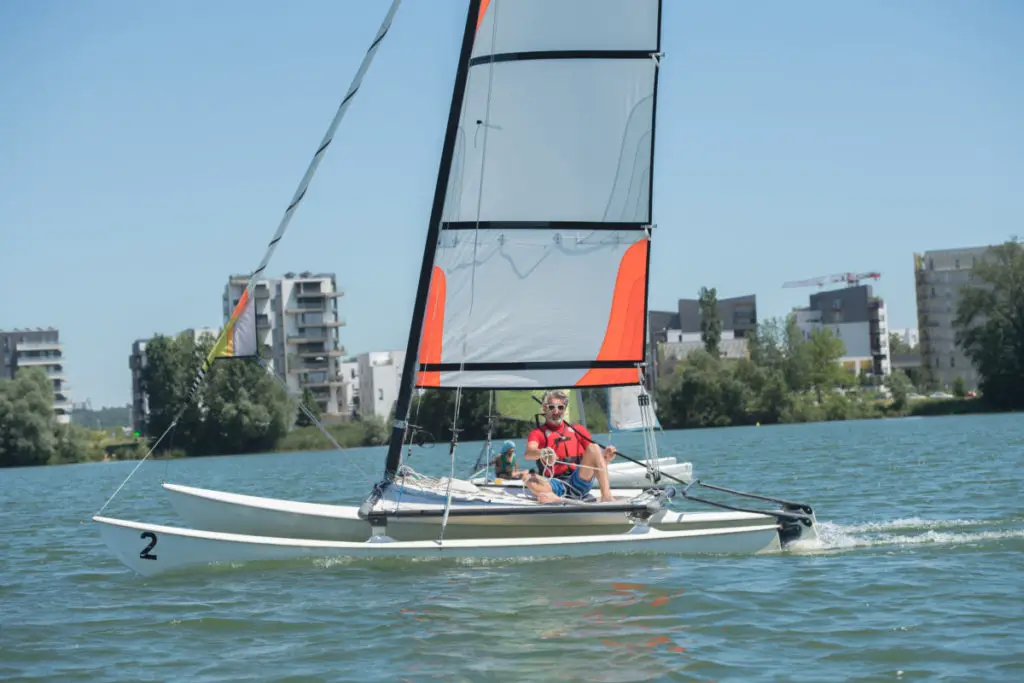
Choosing a Sailing School
If you decide to take sailing lessons, you need to research different sailing schools to find the best one for you (ASA and US sail are the biggest). While you may be tempted to pick the cheapest or closest school, there are differences between every sailing school, so you need to choose one that has the right program for you.
Different schools have different programs depending on the type and size of the boat you want to sail but also the type of sailing, cruising, or racing. Lessons for the smaller boats tend to be cheaper than larger boats if that makes any difference in your decision.
Another factor regarding the cost you should consider is what the class comes with for what you’re paying. Consider the topics covered, the length of the boat, and how much time you get to learn and practice on the water if any. You may also need to pay some fees for equipment or an official certification if they’re not covered in the cost of the class.
I compared ASA sailing with US sailing only to choose to go with neither, find out why, here.
Types of Sailing Lessons
When you start sailing, you need to decide what type of sailing you want to learn first. Once you learn one type of boat, you can easily learn the others, but you need to choose one to start and make sure you find a school that teaches that kind.
The first kind of sailing lesson you can take is for small boats (<20ft), such as Hobie cats or dinghies, etc. Small boats only fit one or two people.
If you’re looking for sailing lessons for your child, you should start with small boat lessons. The size is perfect for kids who want to start sailing because it does not require as much skill and strength as the large sailboats.
But, adults will find small boat lessons valuable as well. It’s easier to grasp the basic parts of sailing when you start on a small boat. And, you get more one-on-one help because the boat will only fit you and the instructor.
Another type of sailing is on larger boats (>20ft), usually around thirty feet long, or sometimes more. When you sail these boats, you usually need at least two to three people, although it’s possible to sail a thirty-foot boat on your own. But, when you’re just learning on the larger boats, you’ll likely be learning with a crew and learning and practicing different roles within the crew.
I love the idea of crossing the Atlantic on my own, so-called "short-handed" sailing, don't think it's possible to do? Read this!
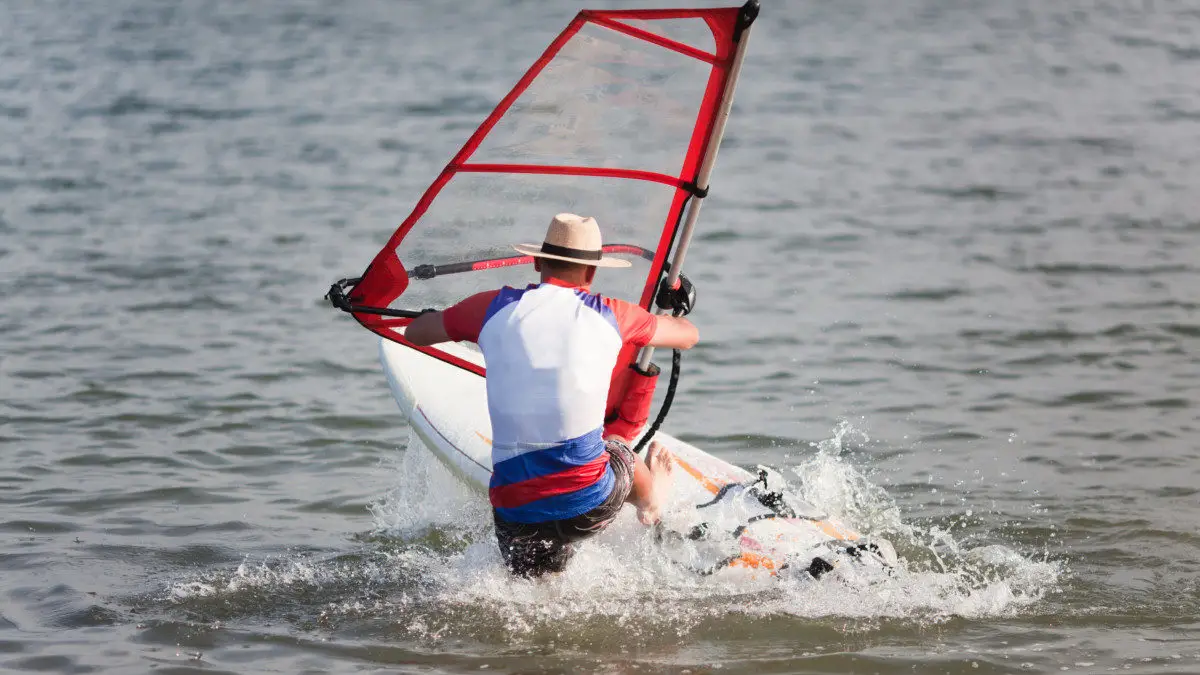
Finally, a less common but interesting way to sail is by windsurfing. It’s a fast-paced type of activity where you’re close to the water. It’s thrilling and can help you understand how wind affects a sail.
Do you know what a leech is? Or why bridge deck clearance matters? No? Then check my interactive guide out, it will jumpstart your learning!
How Long Does It Take To Learn Sailing?
You can learn the most basic terms and parts of sailing in less than a day. It usually takes a novice sailor one week to safely sail coastal calm waters. If you want to sail big oceans then one to two years of experience, at least, is recommended.
The first step is to take an online course from NauticEd, which takes less than an hour to complete (free with this link).
The course teaches everything that you need to know as a beginner sailor. You’ll learn basic sailing terms, how you steer a sailboat, and what the different parts of the boat are.
However, how long it takes to learn sailing heavily depends on your learning method. For example, if you only rely on books to learn, it’ll take much longer than taking lessons with an experienced instructor.
Good instructors know how to teach and what to teach, and they do it in the fastest and most efficient way. And, if you come across anything you find confusing, you can easily ask the instructor to help you out instead of having to find the answer or figure it out on your own.
But, taking a sailing course is not enough. Once you complete the course, practicing sailing by being out on the water is the best way to learn. You can get the hang of the basics pretty quickly, but if you want to master sailing, you need to dedicate time and energy to being on the water and honing your skills.
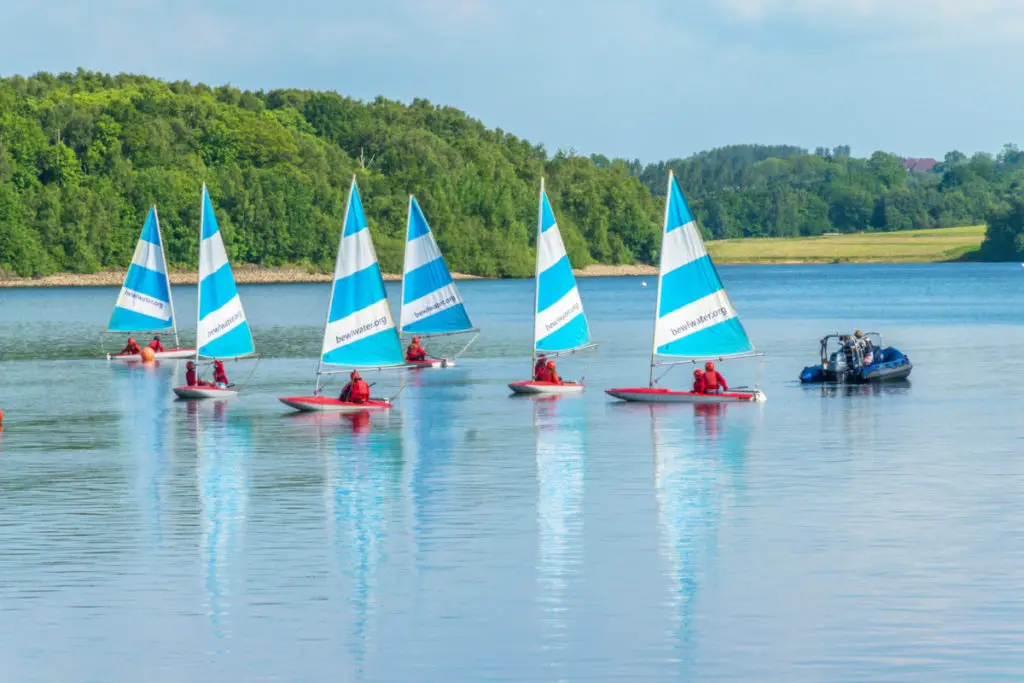
Can Anyone Learn To Sail?
Anyone can learn how to sail regardless of their age or prior sailing experience. Sailing academies offer classes for all ages, skill levels, and types of sailing. Anyone can find a sailing school or course that will suit their needs and learning styles.
Are you too old for sailing? Are you fit enough? I have an article that will help you evaluate.
While you can start learning to sail using online resources, on a boat with a trusted friend, or on your own, it will be more challenging than taking a class from a sailing instructor or academy.
Can You Sail a Boat With No Experience?
If you have never sailed before and try to sail a boat, it’s almost guaranteed that you’ll be unsuccessful. Even if you have taken all the online classes and know everything there is to know about sailing, you need hands-on practice and experience before you can safely sail.
One of the many benefits of sailing classes is that you do most of the learning on the water, where you can practice with sails and have someone there to guide you through it. If you’re struggling, an instructor can help you recognize and fix your mistakes. If you’re on your own with no experience, you’ll have to figure out everything independently, and it can become frustrating very quickly.
So, while it’s rare, you may be able to sail a boat with no experience. But, you will have a much easier time during the initial sailing process if you take a class and use some online resources first.
Sailing Resources
Whether you’re taking sailing lessons or not, you’ll find the resources in this section helpful as you start learning how to sail.
- Basic Keelboat: The National Standard for Quality Sailing Instructions: This book will teach you how to sail a keelboat, a smaller boat around twenty to twenty-seven feet long. You’ll learn helm commands, points of sail, and basic navigation rules. By the end of this book, you’ll have the knowledge to sail a keelboat during the day in light to moderate conditions.
- Basic Cruising: The National Standard for Quality Sailing Instruction: This book is just like the one above, except you will learn how to sail on a larger, auxiliary-powered cruising sailboat and work with a crew on one.
- The Sailing Bible: The Complete Guide for All Sailors from Novice to Expert: As you learn more about sailing and your skills increase, this book will be useful as you need a reference for basic topics and want to continue learning more about sailing and how to improve.The book has maps, charts, and information on GPS navigation and colored pictures, and guides to help you learn even better.
- This video from Josh Post on YouTube is a twenty-five-minute step-by-step sailing guide that will teach you basic sailing vocabulary and parts of the boat.
Want to learn to sail a catamaran? This post is for you!
- Another great video is this one from Learn 2Sail, which explains what all sailing entails and how to get started with sailing.
Final Thoughts
Sailing lessons are the best way for beginners to learn how to sail. You’ll learn from a certified guide who knows exactly how and what to teach you, and they’ll do it most efficiently, so you will be out on the water sailing in no time. But, there are also plenty of online resources that you can utilize so you can learn sailing basics before you take a class, get out on a boat, or just for fun.

